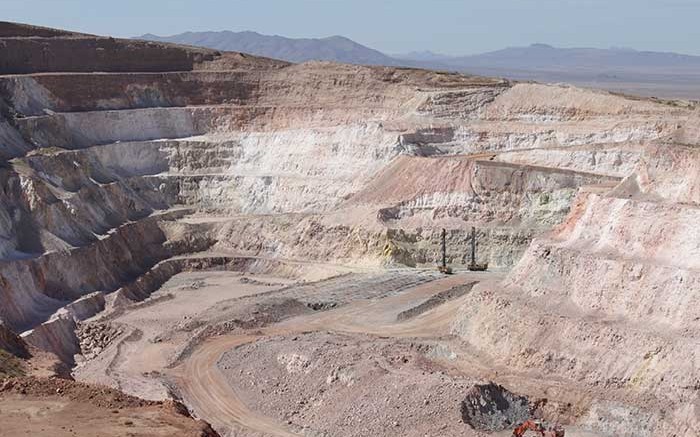VANCOUVER — It’s been a bleak few years for Allied Nevada Gold (TSX: ANV; US-OTC: ANVGQ) and its employees and shareholders, as falling gold prices and operational difficulties combined to put the company in dire financial straits. And despite Allied Nevada’s efforts to maintain solvency, the situation came to a head on March 10, when the Reno, Nevada-based company filed for protection under Chapter 11 of the U.S. Bankruptcy Code.
In retrospect Allied Nevada may be viewed as a cautionary tale of valuing tonnage over grade. The company was riding high back in mid-2011 when gold prices peaked at over US$1,800 per oz. and it traded at $45 per share. But Allied Nevada’s fortunes are tied to its Hycroft gold-silver mine 90 km west of Winnemucca, Nev., with the open-pit, heap-leach operation becoming a money pit for the company over the past three years.
Allied Nevada has increased the mining rate at Hycroft in an effort to cope with uneconomic precious metal grades at spot gold prices. According to a resource update published in late 2014, Hycroft’s proven and probable reserves total 706 million tonnes grading 0.3 gram gold per tonne and 13.9 grams silver per tonne for 16.3 million contained equivalent oz. gold.
The result is that one of the world’s largest gold operations on a daily tonnage basis is operating at a loss. Hycroft needs 27 haul trucks and three hydraulic shovels to move 275,000 tonnes of material per day.
Through the first nine months of 2014 Allied Nevada cranked out 129,400 oz. gold and 505,000 oz. silver, but registered a net loss of US$62.4 million, or 60¢ per share, during the third quarter. The company’s fourth-quarter and full-year financials have not yet been released.
Warning signs emerged at the end of November that Allied Nevada was tipping toward a liquidity crisis when it reported just US$1.3 million in cash, while debt weighed in at US$568 million.
The company closed a Hail Mary financing in mid-December when it issued 22 million shares at $1 per share for gross proceeds of US$21.8 million, but according to court documents, it held less than US$4.5 million in cash at the time of the bankruptcy filing.
Documents filed in the U.S. Bankruptcy Court indicate Allied Nevada’s assets are worth more than US$941 million, while its debts total more than US$663 million. Allied Nevada will file a pre-negotiated plan with the support of note holders, who own more than 67% of $400 million in 8.75% notes due in 2019. Lenders of the company’s revolving credit line also reportedly support the plan, according to regulatory filings
Under proposed financial restructuring, which requires court approval, Allied Nevada’s trade creditors and vendors are expected to be paid in full. The company also intends on running daily operations with “no interruption in business.”
Quite ironically, Allied Nevada’s plan before the bankruptcy proceedings actually involved a propoesd US$1.4-billion expansion plan at Hycroft.
The company had been seeking financing for a two-phase plan for the mill, with initial throughput starting at around 60,000 tons (54,400 tonnes) per day before expanding to 110,000 tons (99,790 tonnes) per day.
BMO Capital Markets analyst Brian Quast has long said that the Hycroft expansion was unfeasible, and noted in a March 10 research note that “while Allied Nevada does expect to pay its trade creditors in full, it seems unlikely that there will be any value remaining for current equity holders.”
BMO Research predicts that mining at Hycroft will stop in the coming months, and has no target price on the stock due to “a negative net present value, high leverage and dwindling liquidity.”
Shares of Allied Nevada were still halted t press time, and the Toronto Stock Exchange announced the company was eligible for a de-listing review after the news. Allied Nevada has traded within a 52-week window of 83¢ to $7.42, and sat at $1.08 per share at the time of the trading halt for a theoretical $136-million market capitalization.
In over the counter trading in the U.S., Allied Nevada shares cliff-dived below US10¢ (C12¢) in the days following the bankruptcy protection filing, and last traded at US10.2¢ on March 17.


Be the first to comment on "Allied Nevada seeks bankruptcy protection"